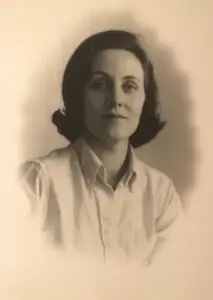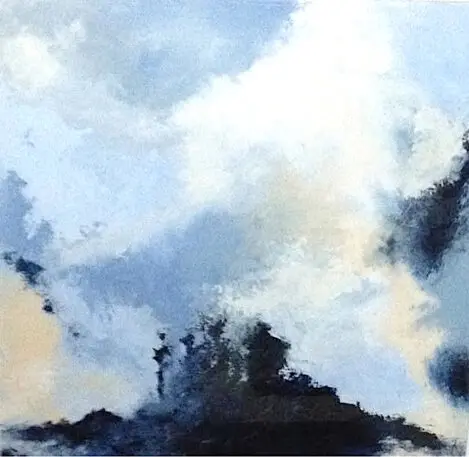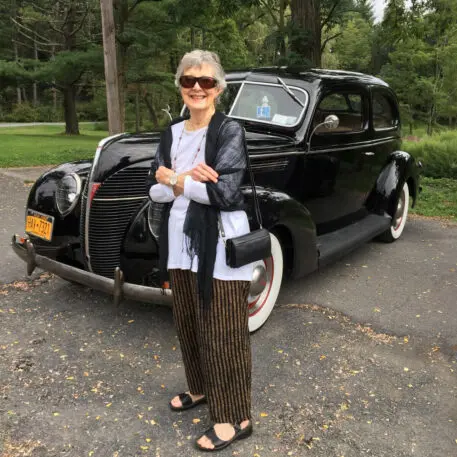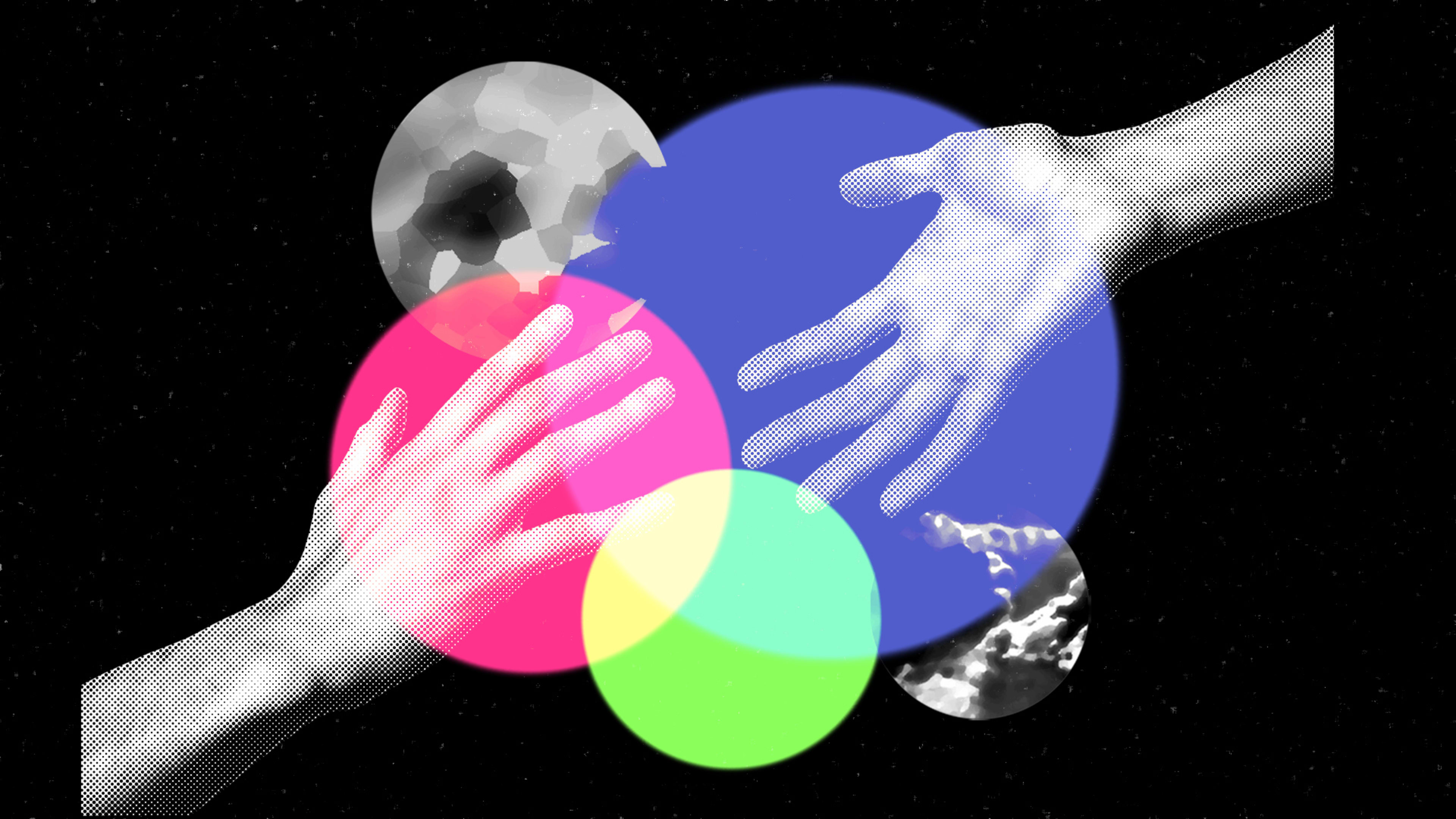This article is part of Fast Company’s Lessons of COVID-19 package, exploring some of the ways America has changed since the pandemic hit and what we have learned from it. Click here to read the entire series.
The Sunday before Thanksgiving, less than a week before she died, my mother was sitting in her bed, fumbling with her iPhone, when she said to me, “I don’t know whether I’m going to heaven or hell, but I hope there are no cellphones.”
She was a former English teacher, an artist, a voracious reader, and the only thing she loathed more than consumer technology was her own infirmity. During the last decade she had experienced the steady physical decline that comes with age, often accelerated by disease (in her case Lyme and cancer), but she resisted at every step. She was frustrated by her own mortality and deeply offended that her doctors had thus far failed to concoct a solution.
“It’s crazy,” she complained to me. “All I do now is sleep!”
I told her that most of us dream of being so lucky as to eventually die in slumber, and she was dramatically increasing her odds by snoozing 22 hours a day. She laughed.

For the next two or three years she continued to take classes at Bard and at the Woodstock School of Art, attend concerts at Maverick and theater in New York City and openings of juried exhibitions that included her own paintings. But as her health continued to decline, life became an escalating series of hospitalizations with an expanding regimen of medications. She took pills by the fistful and ambulances like they were Ubers. In the last quarter of 2019, she was hospitalized three times and then again in in February of this year. My elder son and I were visiting her at Vassar Brothers in Poughkeepsie when we all watched the news reports about the first confirmed case of local COVID-19 transmission in the United States.

But nursing homes weren’t exactly a sanctuary. They were among the deadliest communities in the United States and Europe. According to the CDC, long-term-care facilities account for just 6% of COVID-19 cases but nearly 40% of the deaths. While Governor Andrew Cuomo eventually earned plaudits for his leadership during the pandemic (New York ranks among the top five states for total number of nursing home COVID-19 deaths but 46th in death per capita), he got off to a rough start in March when his administration advised New York nursing facilities to continue admitting patients who’d tested positive for the virus.
My mother was lucky to have landed at Woodland Pond, where the staff quickly issued strict protocols, closing down common areas, insisting on masks, delivering meals to residents at their apartments. Visitation was restricted, and those of us with companion status were required to get tested and show negative results every week. Finding a place to get tested was a challenge, and if your insurance didn’t cover it (I was lucky), you’d be paying about $100 a pop. Last week, nearly twelve months after the first U.S. COVID-19 fatality, my daughter waited in line for five hours to get tested. The citizenry that mobilized 80 years ago to ration food and ramp up production of four-engine bombers at the rate of one per hour to win a world war that cost 407,316 U.S. lives on mostly foreign soil now struggles to convince itself to wear masks while failing to produce sufficient tests and personal protective equipment during a pandemic that the University of Washington predicts will claim 539,000 U.S. residents by April 1, 2021.
Despite Woodland Pond’s careful regulations, we still worried. How long before Mom landed back in the hospital?
Not long, as it turned out: A stroke in early May returned her to Vassar Brothers. We were not permitted to visit her but Facetimed and talked on the phone every day for the two weeks she remained in the hospital. She was as articulate as ever but the right-brain stroke had left her with a condition called left-side neglect, a common strange affliction that can produce partial paralysis and a compromised ability to perceive things on the left periphery.
She transferred into the skilled nursing unit at Woodland Pond, where she was confined to her room. Even when restrictions eased slightly for the residents in the independent living section, skilled nursing and assisted living remained in lockdown, falling under the category of nursing facilities and thus subject to stricter state protocols issued by the Cuomo administration. On weekends my sister and her husband, my wife and I, and whichever grown grandkids might be handy, made the trip to New Paltz to wave to her through the ground-floor window while talking to her on her cell phone.
The isolation was a hardship on patients. My mother told us that she knew of several men who’d been medically stable in skilled nursing for years but had died within weeks once their wives were no longer allowed to visit. Woodland Pond enforced its guidelines rigorously, and you could hardly argue with the results: At a time when some American and European long-term-care facilities had lost more than a hundred residents to the pandemic, Woodland Pond (with nearly 400 residents) had not suffered a single COVID-19 fatality or even a serious case requiring hospitalization.
“Without a doubt, isolation is the most difficult part of this for our residents,” says Michelle Gramoglia, Woodland Pond’s president and CEO. “Tomorrow is not guaranteed to any of us, but their feelings of impending mortality compound the isolation in ways most of us cannot begin to understand.”
About a week after arriving in skilled nursing, my mom called my sister, slurring her words and sounding garbled and said she was afraid she’d suffered “another streak.” I called later that day and she sounded a bit better. They’d managed to stabilize her blood pressure. She told me she felt okay, no discomfort or pain, but was pretty sure she was dying. “It’s actually very interesting,” she said. “I think my heart’s giving out. I just hope it doesn’t take all day.”
It actually wound up taking four more months.
She faced a choice upon release from skilled nursing: return to independent living or move to assisted living. Absent the pandemic, she would have chosen the latter. When moving to Woodland Pond she’d paid a significant additional sum to ensure that, when the time came, she could move into assisted living without incurring any additional monthly cost. Now, however, thanks to COVID-19, assisted living felt to her like being sentenced to solitary confinement.

I typically visited my mom on Sundays, and her favorite thing was to get into my car and drive for an hour or two, looking at the leaves and the light on the Shawangunk mountains. We explored the Roundout and the little village of St. Remy, where Sojourner Truth lived as a child. Our last outing, early in November, was a quick trip to the hardware store to replace her broken flashlight.
That was the last time she left her apartment. Failing rapidly, she now needed round-the-clock care, and feeling out of our depths my sister and I scrambled to get her admitted to skilled nursing, but once again bumped up against New York state regulations that required a negative COVID-19 test result before admission. The Thanksgiving holiday meant the results would be delayed, and before we received them our mother was unconscious.
The final irony of my mother’s life was that this delay wound up playing to her wishes. She much preferred the thought of dying in her own place rather than a sterile hospital environment. We arranged for hospice care and began our vigil, and two days after Thanksgiving, my mom died peacefully in her own apartment, her daughter holding her hand.
Recognize your brand’s excellence by applying to this year’s Brands That Matter Awards before the final deadline, June 7.
Sign up for Brands That Matter notifications here.
